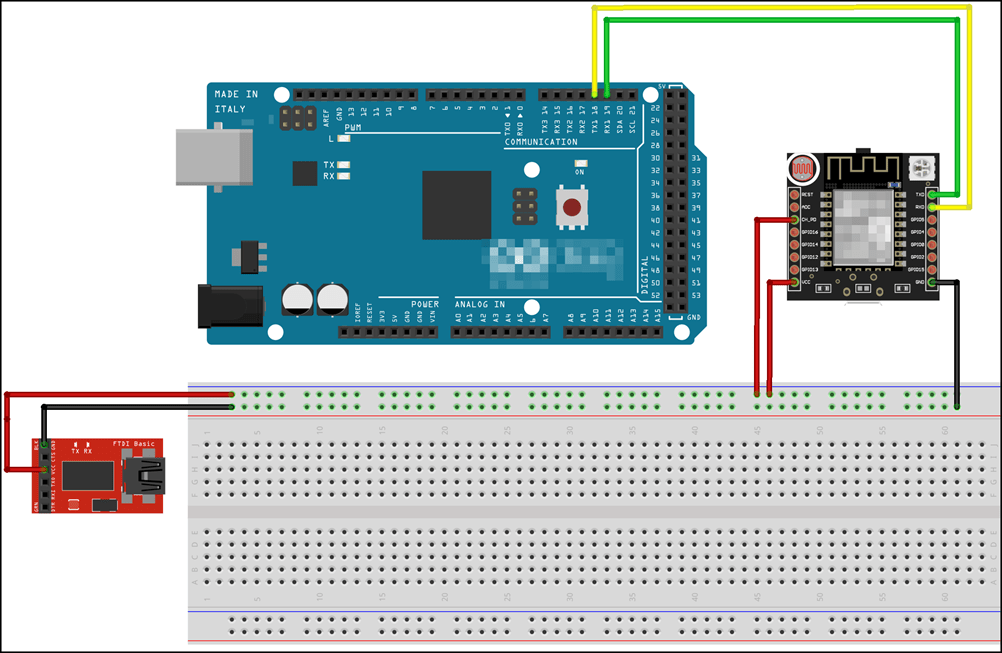Connect ESP8266 to Arduino Hardware
ESP8266 is a low-cost chip that can add Wi-Fi® capability to a microcontroller. Many models of ESP8266-based chips, such as ESP-01 and ESP-12, are available. The models differ in the number of GPIO pins exposed, amount of flash memory, and various other factors. However, the basic Wi-Fi functionality across all the variants is the same.
ESP8266 communicates with Arduino® through a serial connection. Arduino sends AT commands to the chip. The chip receives the command, processes it, and sends back the response.
Connect ESP8266 to Arduino board as shown in this circuit diagram. The chip used in the circuit diagram is ESP-12, but you can use the same pins with other models of ESP8266.

Power Source to ESP8266
The table shows the pin connections between the power source and ESP8266.
| Power Source | ESP8266 |
|---|---|
| 3.3 V | VCC |
| 3.3 V | CH_PD |
| GND | Gnd |
Caution
The ESP8266 chip requires only 3.3V to communicate. The chip does not have 5V tolerant inputs. If the chip is connected to 5V devices, the chip might get damaged.
Arduino Hardware Connections to ESP8266
The table shows the pin connections between the Arduino board and ESP8266.
Connect the TX pin of ESP8266 to the RX pin on the Arduino board, and connect the RX pin of ESP8266 to the TX pin on the Arduino board. For more information about the serial ports on different Arduino boards, see Pin Mapping for Arduino Timer-Independent Blocks.
| ESP8266 | Arduino |
|---|---|
| TX | RX |
| RX | TX |
After you connect the desired serial port, browse to Configuration Parameters > Hardware Implementation > Hardware board settings > Target hardware resources > WiFi properties, and set the parameters as described in Configure Network Settings for Wi-Fi.